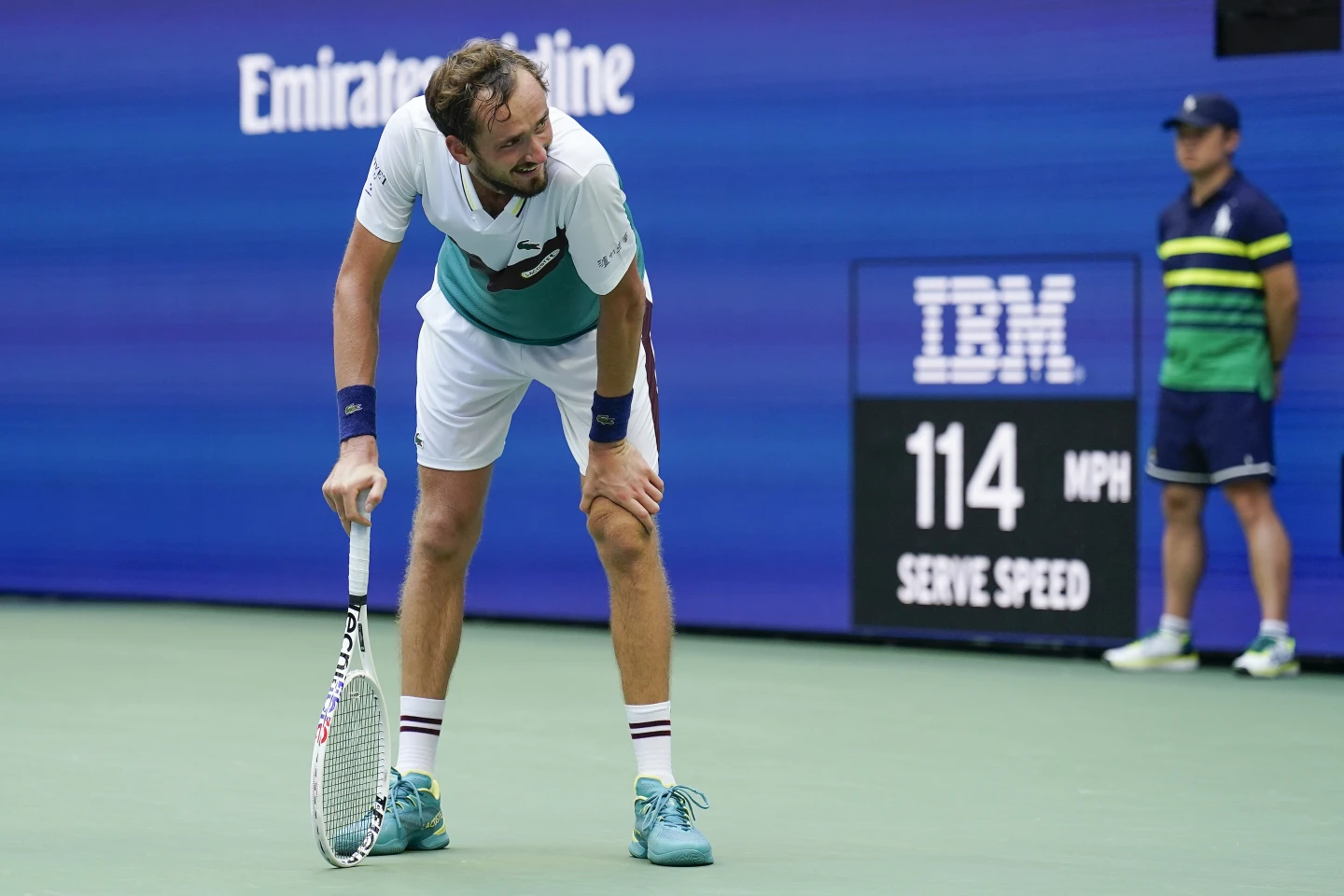As the scorching sun blazed overhead, 2021 U.S. Open champion Daniil Medvedev found himself soaked with sweat, trying to cope with the blistering heat, which neared a sweltering 95 degrees Fahrenheit (35 Celsius) on what turned out to be one of the hottest days of this year’s tournament. Medvedev, known for his composure on the tennis court, was visibly affected by the extreme conditions and took a moment to towel off between points during his match. Looking into a courtside camera, he issued a stark message that sounded both like a warning and a plea.
“You cannot imagine,” he said, “One player (is) gonna die, and they’re gonna see.”
Medvedev, a 27-year-old Russian and the third seed in the tournament, expressed his concerns after defeating Andrey Rublev 6-4, 6-3, 6-4 to advance to the semifinals at Flushing Meadows for the fourth time.
“The only thing that is a little bit, let’s call it dangerous, is that the question is: How far could we go?” Medvedev pondered. He acknowledged that while the conditions were brutal, it was challenging to consider suspending the tournament for several days, as it would disrupt schedules and logistics for both TV broadcasts and ticket holders.
An analysis by The Associated Press reveals a troubling trend of increasing heat at Grand Slam tournaments in recent years, mirroring the climate change-induced heatwaves experienced across the globe this summer. The U.S. Open’s second week has pushed players to their physical limits.
In their quest to stay cool, players are resorting to using copious amounts of ice, packing it in plastic bags or wrapping it in towels. Court-side tubes blowing cold air are another measure taken to combat the oppressive heat.
During his match, Medvedev even needed to use an inhaler during a second-set changeover while being assessed by a doctor who checked his breathing with a stethoscope. His opponent, Andrey Rublev, also struggled, and the relentless heat left both players visibly drained.
“I couldn’t see the ball anymore,” Medvedev admitted, describing the toll the heat took on him during the first set. He noted that Rublev, his countryman and a close friend, appeared equally fatigued and could hardly run.
Despite the challenging weather conditions, Medvedev will return to the court on Friday for his semifinal match against defending champion Carlos Alcaraz, who secured a 6-3, 6-2, 6-4 victory over 2020 U.S. Open runner-up Alexander Zverev. The match promises to be a test of endurance in the grueling heat.
In response to the extreme conditions, the U.S. Tennis Association made a partial adjustment by closing the retractable Ashe roof — usually utilized to shield against rain — to provide additional protection from the blazing sun for both spectators and competitors. However, an unintended consequence of this decision has been the creation of shadows that make it challenging for players to see the tennis balls during play.
While the oppressive heat has undoubtedly posed a significant challenge for the players, it has also illuminated the ongoing climate change crisis and its impact on major sporting events. As players battle the elements on the tennis courts of the U.S. Open, the tournament continues with fervor, showcasing the resilience and determination of athletes in the face of climate-related adversity.









Leave a Reply